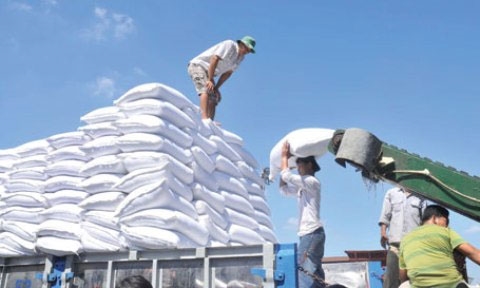Located on the foot of the Caucasus, the West Asian country of Armenia shares border with Azerbaijan, Georgia, Turkey and Iran, and has an area of 29,743 sq.km and a 2.98 million-strong population. After historical ups and downs, Armenia has conducted economic reforms, shifting from a subsidy model to a market one since the 1990s. In doing so, the country carried out a massive privatization process, resolutely reformed its financial and banking systems and laws to attract foreign investment in the country as well as to boost domestic production.
    |
 |
|
Armenia has demand for sugar. (Photo for illustration. baodautu.vn) |
In recent years, Armenia has maintained stable economic growth and low inflation rates. Its major export lines include high-quality electronics, cables, tobacco, dairy products, poultry and cattle, cognac and jewelries while it has to import grain, sugar, hi-tech products and fuel.
As a small country with few natural resources and difficult terrains, Armenia has to import a large number of materials and fuels for its domestic industrial and agricultural production. The country has a good policy to draw remittances from Armenian nationals living in other countries, and this financial source is very important to the country’s economic development. According to the official statistics, overseas remittances sent to the country amounted to USD 1.76 billion in 2017.
Regarding its foreign policy, Armenia diversifies relations with countries and international organizations. It balances its relations with Russia and the West, particularly the EU, to attract more foreign investment and financial support for its development as well as to strengthen its defense and security. Armenia has so far joined over 40 regional and international organizations, including the Organization for Security and Cooperation in Europe, the Non-Aligned Movement WTO and the UN.
Vietnam and Armenia have maintained good political ties since they established diplomatic ties on July 14, 1992, and since then the bilateral relations have continuously developed.
In the past, the West Asian country provided valuable support for the Vietnamese people to build the country and fight foreign invaders, particularly its assistance in training human resources.
Today, the two countries have regularly coordinated and supported each other at international forums, exchanged delegations at all levels and promoted ties between their ministries, sectors and localities, thus enhancing mutual political trust and understanding, creating a firm foundation for partnerships in economy-trade-investment and other areas.
High-level visits between the two countries include official visits to Vietnam of Vice President Gagik Harutyunyan of Armenia in December 1992 and President Serzh Sargsyan in June 2012 and Vietnamese Minister of Justice Ha Hung Cuong's visit to Armenia in October 2015.
Vietnam and Armenia have set up an inter-governmental committee for Economic, Commercial, Scientific and Technological Cooperation, which convened its first meeting in March, 2017. The meeting was said to be an important milestone in bilateral cooperation, helping direct bilateral ties towards greater scale and efficiency.
Economic-commercial cooperation between the two countries remains modest, standing at USD 3.6 million in 2018. Vietnam signed a free trade agreement with the Eurasian Economic Union (EAEU), to which Armenia is a member, in May 2015. The deal, which took effect on October 5, 2016, is expected to lay a firm ground for the two countries to expand trade and investment cooperation in the future.
Vietnam and Armenia have signed agreements on cooperation in economy-trade, culture and science-technology, and investment encouragement and protection. The two countries also waive visas for each other’s bearers of diplomatic and official passports.
In the context of good traditional friendship between Vietnam and Armenia, the Vietnamese people believe that the ongoing official visit to Vietnam of Armenian Prime Minister Nikol Pashinyan and his spouse will reach successes, bringing the bilateral relations to a new high level and expanding bilateral cooperation in various fields.
Written by the Editorial Board
Translated by Thu Nguyen